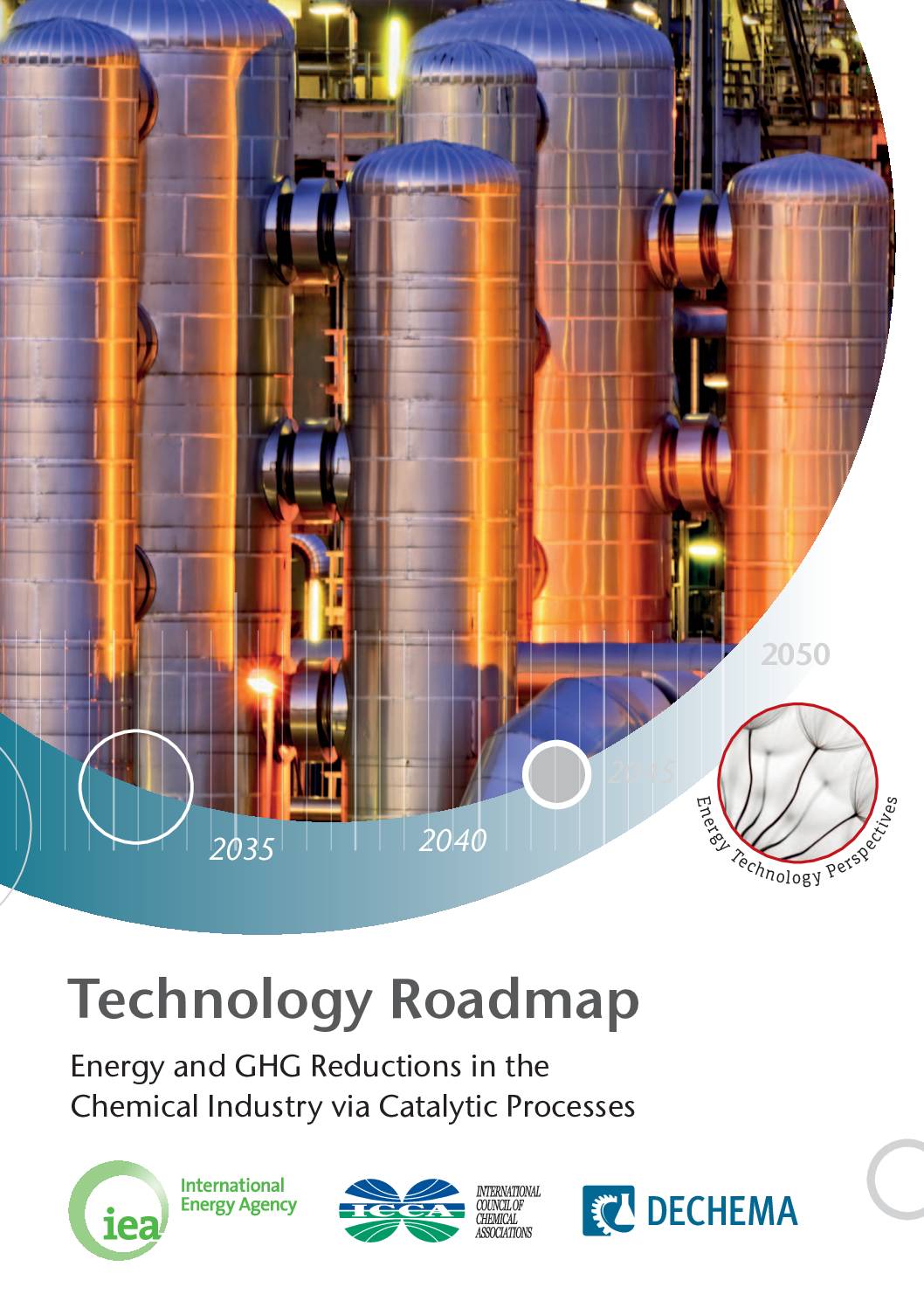The chemical industry is a large energy user; but chemical products and technologies also are used in a wide array of energy saving and/or renewable energy applications so the industry has also an energy saving role. The chemical and petrochemical sector is by far the largest industrial energy user, accounting for roughly 10% of total worldwide final energy demand and 7% of global GHG emissions. The International Council of Chemical Associations (ICCA) has partnered with the IEA and DECHEMA (Society for Chemical Engineering and Biotechnology) to describe the path toward further improvements in energy efficiency and GHG reductions in the chemical sector.
The roadmap looks at measures needed from the chemical industry, policymakers, investors and academia to press on with catalysis technology and unleash its potential around the globe. The report uncovers findings and best practice opportunities that illustrate how continuous improvements and breakthrough technology options can cut energy use and bring down greenhouse gas (GHG) emission rates. Around 90% of chemical processes involve the use of catalysts – such as added substances that increase the rate of reaction without being consumed by it – and related processes to enhance production efficiency and reduce energy use, thereby curtailing GHG emission levels. This work shows an energy savings potential approaching 13 exajoules (EJ) by 2050 – equivalent to the current annual primary energy use of Germany.
Share this

Sectors: Industry, Renewables
Country / Region: Global
Tags: chemicals sector processes, emissions, energy, energy efficiency, energy savings, greenhouse gas emissions, industry, renewable energies, roadmapsKnowledge Object: Publication / Report
Published by: IEA
Publishing year: 2013
Author: IEA
